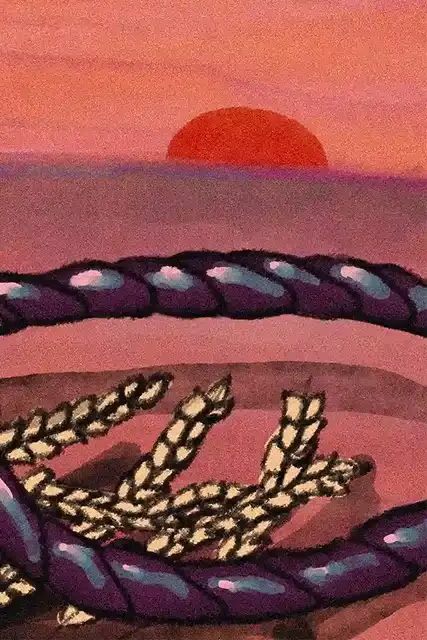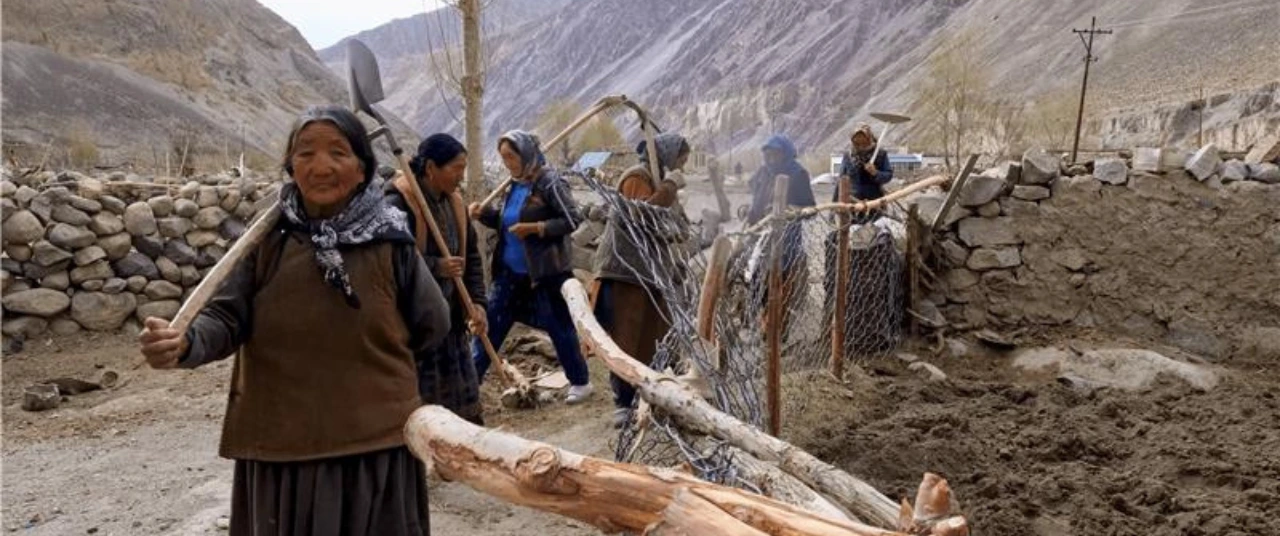Community support is essential to prevent further tragedies






Ramnihor, a young farmer of Baragaon village in Banda district (Uttar Pradesh) was known to be a sincere and sensitive person. With his father and brother facing health issues, he worked tirelessly to support the family's finances. Despite his efforts, he struggled to repay an old loan. What started as a one-lakh-rupee debt had grown to about five lakh due to interest.
With only 3 acres of land, Ramnihor couldn’t find a way to repay the loan. After trying everything and failing, he started saying he didn’t want to live anymore. He attempted suicide twice but survived. His worried family kept trying to talk him out of it, even bringing in respected relatives for help. Unfortunately, earlier this year, despite their efforts, he took his own life.
Listening to the family's heartbreaking experiences, my main takeaway was that this tragedy could have been avoided with timely help. Ramnihor's suicide wasn’t sudden or unexpected—there were clear warning signs, but help didn’t arrive in time.
After Ramnihor's death, his eight-member family, including his wife and daughter, still faces health issues and the burden of repaying the loan.
%2520(1)%2520copy.avif)
Another tragic loss
A similar experience happened to another farmer, Rameshwar, from Hastam village in the same district. He took out a loan of Rs 425,000 to buy a tractor. Although his small farming family was hesitant, agents convinced Rameshwar by promising an easy bank loan, which turned out to be anything but easy. Even paying the interest was a struggle, especially in bad farming years, and when the tractor broke down, there was no money to fix it.
Rameshwar lived in constant fear of loan recovery notices and had to repeatedly explain that he couldn’t pay. After receiving one such notice, his distress grew, and in May this year, he took his own life.
When I visited the family two weeks later, the sense of hopelessness was overwhelming. They were mourning again, as Rameshwar’s brother had also died from the shock of the suicide. Meanwhile, Rameshwar’s son Vijay Bahadur is in poor health, and the loan remains unpaid.
%2520copy.avif)
In both cases, these suicides could have been avoided if real help and alternatives had been available in time. While there’s been talk about counselling and helplines, what’s really needed is a plan for genuine relief or alternatives that give struggling farmers real hope.
Positive turnaround
Let me share the positive story of a farmer who received timely help, which ultimately saved his life. I met Sanjay Bhagat, a farmer from Washim district in the Vidarbha region of Maharashtra, while I was reporting on a low-cost, self-reliant, and environmentally friendly farming program called INSAP (Integrated Sustainable Agriculture Program).
No one in our village now thinks of suicide. We have seen hope. We want to take this hope to more and more villages.
Bhagat shared that he had fallen into debt and, secretly, had decided to end his life soon. At that point, when some friends mentioned INSAP to him, he thought, “What’s the harm in trying something new? I’ll be dead soon anyway.” However, when he tried INSAP farming, which is similar to natural farming, it worked so well for him that he completely abandoned his thoughts of dying. Instead, he decided to promote ecologically friendly farming to more people. When I met him, he was excited about spreading this method even further.
During my visits to various areas focused on low-cost, self-reliant, and eco-friendly farming, I found that small farmers, including women, are filled with hope and creativity. However, this positivity is mostly limited to the specific areas where these programs are active.
Not all farmers have the energy or ability to find alternatives on their own. In the two families I mentioned earlier, health issues played a significant role in the difficult situations they faced.
Even when some farming families want to explore promising alternatives, they can be held back by their existing debts. To truly give them hope, they may need some form of debt relief or a rescheduling of payments into smaller, more manageable amounts.
Call for support
With the support of panchayats, activists, NGOs, farmers' groups, and local authorities, there should be efforts to identify the most vulnerable farming families and workers so they can receive timely assistance or debt relief. There should be enough funding available from local authorities or panchayats, based on special government programs designed for this purpose.
Debt is a significant factor in farm distress. Punjab has been at the forefront of using costly, chemical-intensive farming methods, which over time have contributed to the heavy debt burdens faced by many small farmers.
A census survey conducted by Punjab Agriculture University found that over a decade, 3,507 farmers in six districts of Punjab committed suicide. Of these, 74% were linked to economic distress and debt, with 80% being small farmers. Another study by Ranjana Padhi showed that loan pressure was the main reason for suicide in 79% of cases, and 70% of the suicides involved the use of pesticides.
Hence the way forward should not be in the form of expensive technologies or those that harm sustainability by negatively affecting essential resources like soil and water. Instead, low-cost, self-reliant, and eco-friendly farming can genuinely inspire hope among farmers. This was evident when INSAP was introduced in some clusters of villages in the Vidarbha region, where suicides stopped, even though they continued in other nearby areas.
Restoring hope
A study by Raghav Narsalay found that 88% of farmers who adopted INSAP said they regained the confidence to continue farming. Purushottam Bhagat, a farmer from Aurangpur village in Washim district, shared that many INSAP farmers have been able to pay off their previous debts and find peace. Sanjay Bhagat, who overcame difficult and depressing times, said, “No one in our village now thinks of suicide. We have seen hope. We want to take this hope to more and more villages.”
{{quiz}}
Explore other topics
References
1. Singh, B. P. (2020). Farmers’ suicides and the agrarian crisis in Punjab: Some sociological observations. Sociological Bulletin, 69 (2), 270–286. https://www.jstor.org/stable/48590589
2. Invisible women. from https://gfm-ed.webflow.io/read/feature-article/invisible-women
3. India’s farmer suicides: The women left behind. from https://dialogue.earth/en/justice/indias-farmer-suicides-the-women-left-behind/




.avif)






